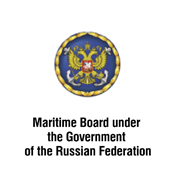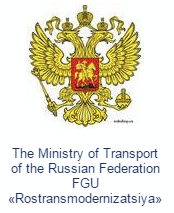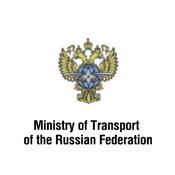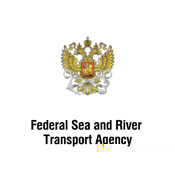May 07, 2015
Greetings from the Ministry of Industry and Trade of the Russian Federation
January 28, 2015
The Forum organizers received the greeting from Gutenev V.V., the First Deputy Chairman of the Russian Engineering Union.
January 15, 2015
The Government of the Russian Federation addressed a welcome letter to the V International Forum Marine Industry of Russia.
More on features of icebreakers
Icebreakers are diesel-electric or nuclear-powered vessels, capable of independent cruising in frozen water areas and used for supporting navigation. They distinguish seagoing, port and river icebreakers. Seagoing icebreakers can be lead icebreakers which make waterways in ice, linear icebreakers which escort vessels as well as ice-cut and tug them, and auxiliary ships performing the functions of linear icebreakers.
Today’s Russian icebreaker fleet is able to meet all the requirements of the northern navigation routes. However, taking into account projects on the Arctic Region development, the country’s demand for such vessels is likely to increase significantly.
STX Finland Oy, descendand of such companies as Wartsila, Kvaerner and Aker, is the world’s leadr in development, design, and construction of icebreakers and other icebreaking ships. More than 60% of the world icebreaker fleet is constructed by the company. The company perofrms construction not only in Finland where its HQ is located but also in USA, Canada and other countries where the majority of icebreakers was constructed by government orders. There are also icebreaker yards in USA, Canada, Denmark and Germany. Just now Wadan Yards Group, an affiliate of FLC West Investment Group, is going to begin building icebreakers. In whole, FLC West possesses three yards: two of them in Wismar and Warnermünde, Germany, and the third in Ukraine.
Icebreakers in Russia
At this stage, the Russian icebreaker fleet is the largest in the world and counts with 6 nuclear-powered icebreakers and Sevmorput, a 40 000 hp nuclear-powered light carrier with an icebreaking bow. 4 of 6 above mentioned icebreakers are 750 000 hp, namely, Rossiya (1985), Sovetskiy Souz (1989), Yamal (1992), 50 Let Pobedy (2007) and 2 are 50 000 hp, namely, Taymyr (1988) and Vaygatch (1990). The Russian diesel-powered icebreaker fleet counts with a few score of vessels.
The interest of Russia in the powerful icebreaker fleet is determined by the fact that all northern national boundaries pass the waters of the Arctic Ocean which is partly covered by sea ice throughout the year except for the Barents Sea. Cargoes and passengers are transported in this region via the Northern Sea Route beginning at the Kara Strait and ending at the Bering Strait. The Route is the only way of bulk transportation to the Chukchi Peninsula and seacoast of Yakutia.
Despite today’s freight volume constituting just one third of the level of the late 80’s of the past century, experts expect it to grow several times by 2015 and to amount 7.8-11.4 million tons or even more; so the need for the icebreaker fleet development is evident.
Icebreaker Design Considerations
- Certain design features distinguish icebreakers among other vessels: the bow is rounded allowing the vessel to ride up the ice and break it with its own weight, while the stern has M-shaped cavity allowing the vessel to tow other vessels. Since modern icebreakers feature backward running, the stern is shaped like an icebreaker’s bow, allowing the vessel to break ice and move apart oncoming ice floats.
- The reinforced hull of the icebreaker has so called ice strake, a part of the planking at the waterline level made of thicker steel sheets.
- As compared with other vessels, the icebreaker’s hull is shorter ensuring its high maneuverability and reducing ice jamming zone dimensions. However, icebreakers’ hulls are longer compared to auxiliary vessels thus ensuring icebreakers’ course-keeping ability, i.e. minimizes snaking while the icebreaker is making the passage.
- Depending on the icebreaker capacity, its hull beam is calculated. At that, the main parameter for high-power vessels is their power plant characteristics; while for calculation of the medium-power vessel hull beam, ice propulsion recalculation is also necessary. The key aspect for auxiliary vessels is their maneuverability and minimum stability.
- Modern icebreakers are constructed with a double bottom which height varies in a wide range but always exceeds the double bottom height of bulk carriers with similar parameters.
Prospects
According to the head of Rosatom, the existing nuclear-powered icebreakers will start lying up in 2014, so the construction of nuclear-powered icebreakers of the new class should begin even now. In 2010, Rosatom intends to construct a new nuclear-powered icebreaker with two draft modes permitting operation both in inland waters and at sea. The construction is to be over in 2015.
The Federal Target Program for the development of transport vessel building implies allocation of 17 bln. rubles for the lead ship construction; in total, this series will comprise up to 5 icebreakers. Only three enterprises can build such vessels in Russia: Baltiysky Zavod, OJSC, Admiralteyskiye Verfi, OJSC, and Sevmashpredpriyatiye, FGUP PO (Federal State Unitary Enterprise, Production Association).
Besides, Russia intends to continue modernization of diesel-powered icebreaker fleet. Moskva and Sankt-Peterburg icebreakers built at the yard of the United Industrial Corporation (UIC) have already been put into service. For the first time in 30 years, we were constructing icebreakers. All the preceding decades, USSR and Russia had vessels constructed abroad.
© Marine Industry of Russia, 2009-2010. All rights reserved.
By: “Ideological buiseness-projects”
Design by Valentina Ivanova.








